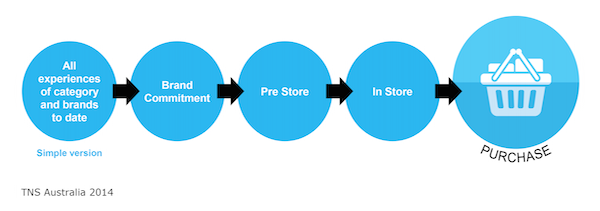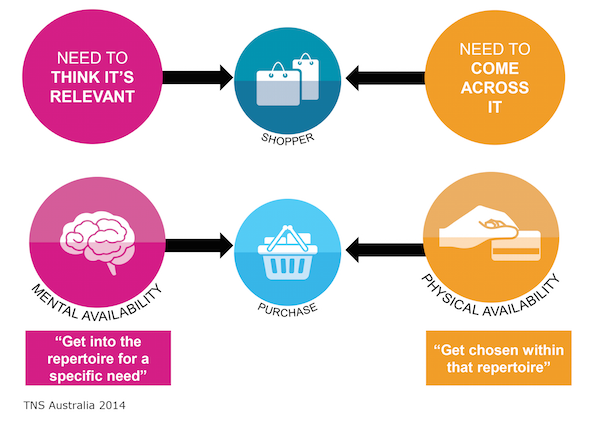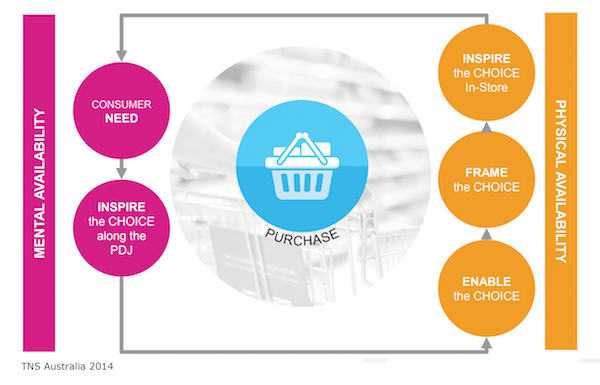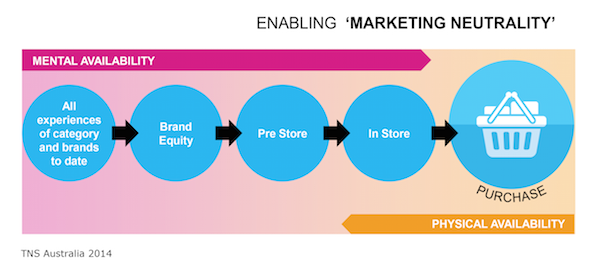 Shoppers shop to meet consumption needs; markets exist because of shoppers; and shoppers define common ground between brands and retailers. But seven out of ten grocery trips are short with 98 per cent of those shoppers visiting less than half the store.
Shoppers shop to meet consumption needs; markets exist because of shoppers; and shoppers define common ground between brands and retailers. But seven out of ten grocery trips are short with 98 per cent of those shoppers visiting less than half the store.
Brands must consider the objectives of both the consumer, who is aware of a product and thinks it could be relevant and the shopper – focused on specific consumption and the products to meet that occasion.
With the complex path to purchase constantly evolving, campaign planning can no longer end with putting creative assets in front of consumers and expecting them to engage. Brands must now address the how, where and when.
The role of influence
Shoppers are increasingly subjected to a multitude of influences that cannot be neatly considered outside the store or before the purchase. Differentiating between consumers and shoppers has become blurred, as online and offline converges and mobile internet enables 24/7 shopping anytime anywhere.
More targeted approaches based on precise understanding of behaviours are required to influence shoppers effectively. The point of purchase decision isn’t necessarily discrete, but in reality is often made a long time before the shopper reaches the shelf.
Shoppers arrive with a lot of baggage and we cannot hope to influence their decisions without first having a detailed (and correct!) understanding of existing behaviours.
Unfortunately appreciation of individual decision making processes is often sketchy, and interruptions planned with little or no thought given to behaviours making them often unsuccessful or with the opposite effect to that intended.
The art of investment
I am most often asked where to invest to influence shoppers (pre, or post store) and how to develop efficient activations. Critical to success is gaining clarity about which decisions to influence, when.
By understanding the journey you can build insight platforms. It comes down to motivating the mental and physical availability of your products, which in turn has implications for portfolio, innovation and brand building equity.
Effective instore activations require the physical fix (enabling the choice by being there), build (framing the choice by being easy to find), and impact (inspiring the choice with a reason to believe). Mental availability is just as important: when identifying and targeting consumer needs, look at ways to inspire choices along the purchase decision journey before they even get to the store.
Are you paying attention?
Communication has the best chance of capturing attention if it surprises, generates an emotional reaction, is relevant, and aligns with a task the shopper is focused on at the time (consciously or unconsciously).
Neuroscientists identify a clear distinction between openly shopping in bottom up mode (outwardly focused and influenced by external stimuli), where we are more receptive to a broader variety of messages than when concentrating on something specific as a decided top down shopper focused on conscious tasks.
The weakness of much multi-platform marketing is failure to adapt creative and media strategies to these different attention scenarios.
The thinking in action
A client in a fragmented, high frequency purchase category faced fierce competition, which led to unsustainable heavy promotional activity.
In seeking other triggers to influence they uncovered three insights: their portfolio was not meeting key occasion needs; touchpoint modelling revealed above the line (ATL) and digital had the biggest impact on brand decisions; and they had a weak portfolio share of impulse purchasing.
By focusing on occasion-based activation with ATL and digital investment they engaged with customers and drove impulse purchasing through secondary placement, a wider format range and cross merchandising with snacks.
Another client invested heavily in improving the instore experience to differentiate their brand but found conversion rates remained stable, hypothesising that shoppers were lost before they even arrived.
They were failing to convert shoppers who had not considered their brand at the start of their journey, while advocacy, critical to conversion, was the poorest performing touch point, plus there was significant drop off in consideration after their website was visited. They instigated work streams to activate brand advocacy to drive greater acquisition throughout the journey and identify the website’s points of frustration.
Take a shopper selfie
Your ultimate goal is to enable market neutrality and incorporate shopper marketing in communications and instore. The fundamentals remain simple: it begins with a need and ends with a purchase, and along the path you have various opportunities to influence each individual shopper and drive conversion.
Stand out by taking a shopper selfie and link brand commitments and experiences to their profile (where they make decisions) and utilise the touch points that best influence them. Make getting to really know your shopper your priority.
Peter Firth is a director at TNS, the world’s largest shopper insights agency. He advises on growth strategies around new market entry, innovation, brand switching and stakeholder management.









